Bentley’s long-term development of parametric modelling tools has finally reached the real world. The Smart Geometry Group continues to evangelise Bentley’s unique approach to form design.
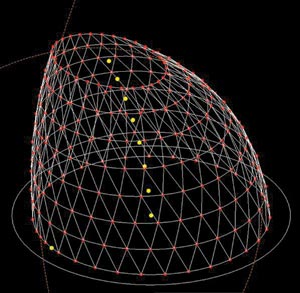
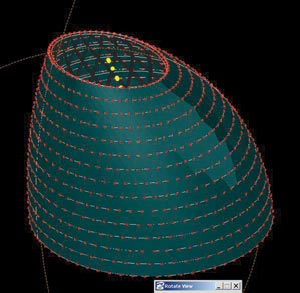
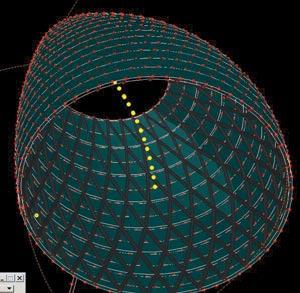
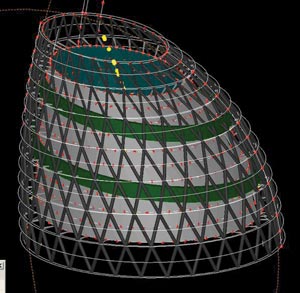
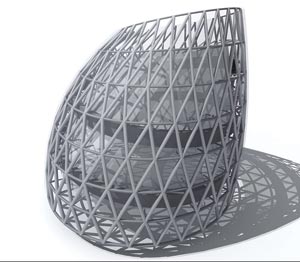
Architectural design software comes in two flavours; 2D drawing tools with symbol libraries and intelligent 3D/2D tools that offer component-level design (walls, doors, windows). In the former you have all the flexibility and freedom of 2D representation, with the advantage of ‘off the shelf’ 2D libraries. The latter creates a 3D model out of components that know how to interact with one another and 2D sections and elevations are derived from this 3D model. The main downside of these modelling tools being that the components are fabricated by the CAD software vendors and limits the capability – you can’t add in a structural element if there are no structural elements in the library to add.
The majority of AEC professionals will find that these two types of product will cater to most design tasks, although with 2D tools, changes and edits could impact hundred of drawings, which have to be done manually. The intelligent 3D solutions overcome this by using parametric and relationship modelling but these concentrate on producing documentation and usually fail to model buildings with complex non-standard geometry.
There are new tools emerging in the AEC market to address these complex geometric issues, together with offering design exploration capabilities. Gehry Technologies is offering Digital Project, based on Catia (a high-end, parametric, automotive and aerospace modeller) and Bentley Systems is becoming increasingly vocal about its Generative Components technology that is built on top of MicroStation. At the last few AEC events I’ve attended, Catia and Generative Components are becoming topics for discussion as industry people wonder what their impact will be.
Smart Geometry
One of the key groups leading the promotion of the new technologies is the Smart Geometry Group, founded by four key industry experts; Robert Aish (Bentley Systems), Hugh Whitehead (Foster and Partners), Lars Hesselgren (KPF) and Jay Parish (Arup Sport). The charity has held a number of seminars around the world, targeting the brightest young minds in and out of University/Practice to share their industry and programming experience and knowledge with the next generation. As the Group is sponsored by Bentley Systems, it is true that the key technology on display is Bentley’s Generative Components, developed by Robert Aish, Bentley’s Director of Research. However, you are just as likely to see other presentations, which include projects designed using Catia, Maya, AutoCAD or Rhino. The key aim of the Group is to educate the next generation of designers by introducing them to design exploration tools which need new approaches and higher degrees of geometric and programmatic skill.
The most recent Smart Geometry event was held in January at the Architectural Association School of Architecture, under the heading ‘Towards a New Paradigm of Architectural Design’. Aish, Hesselgren, Whitehead and Parish, each gave a presentation on the work of students to date, together with an insight in how their practices use computers and advanced software to tackle design problems. Parish talked about wanting to be able to design a Stadium, in detail, in a day, while Whitehead worked through a few Foster and Partners projects explaining how their parametric approach to modelling allows design exploration and experimentation.
It looks as if Bentley’s Generative Component technology has matured, while still in development. Hesselgren admitted that KPF was actually using it on an important live project, although he was not at liberty to say which. The work of the students was highlighted and easily demonstrated the incredible capabilities of taking a programmatic approach to modelling.
Generative Components is not about walls, doors windows, the intelligence is not at that level. As the name of the Group suggests, it’s about Smart Geometry – the tool provides an environment in which geometry (lines, arcs, circles, solids, surfaces) can be related, transformed, generated and manipulated within a user-defined framework. While that might sound complicated, the end results are certainly worth seeing, complex, sculpted geometry can be quickly generated and manipulated in real-time, allowing design exploration and variation. In real-terms that could provide a practice with the ability to come up with 20 or 30 designs simply by moving sliders within a Generative Component model.
Conclusion
The scale and complexity of the student work is certainly getting more impressive with each event. The news that Generative Components are being used on a live project is also extremely exciting. However, to understand the technology and break down the problem into a program requires a new outlook to problem solving, and this is perhaps why the Smart Geometry Group is concentrating on new minds, as well as those special industry folks who have been struggling to find this kind of tool for years.
I think the images speak for themselves. These complex forms were all automatically generated using standard geometry, defined by the users, allowing further interaction, manipulation and refinement.
www.smartgeometry.org
www.bentley.co.uk






